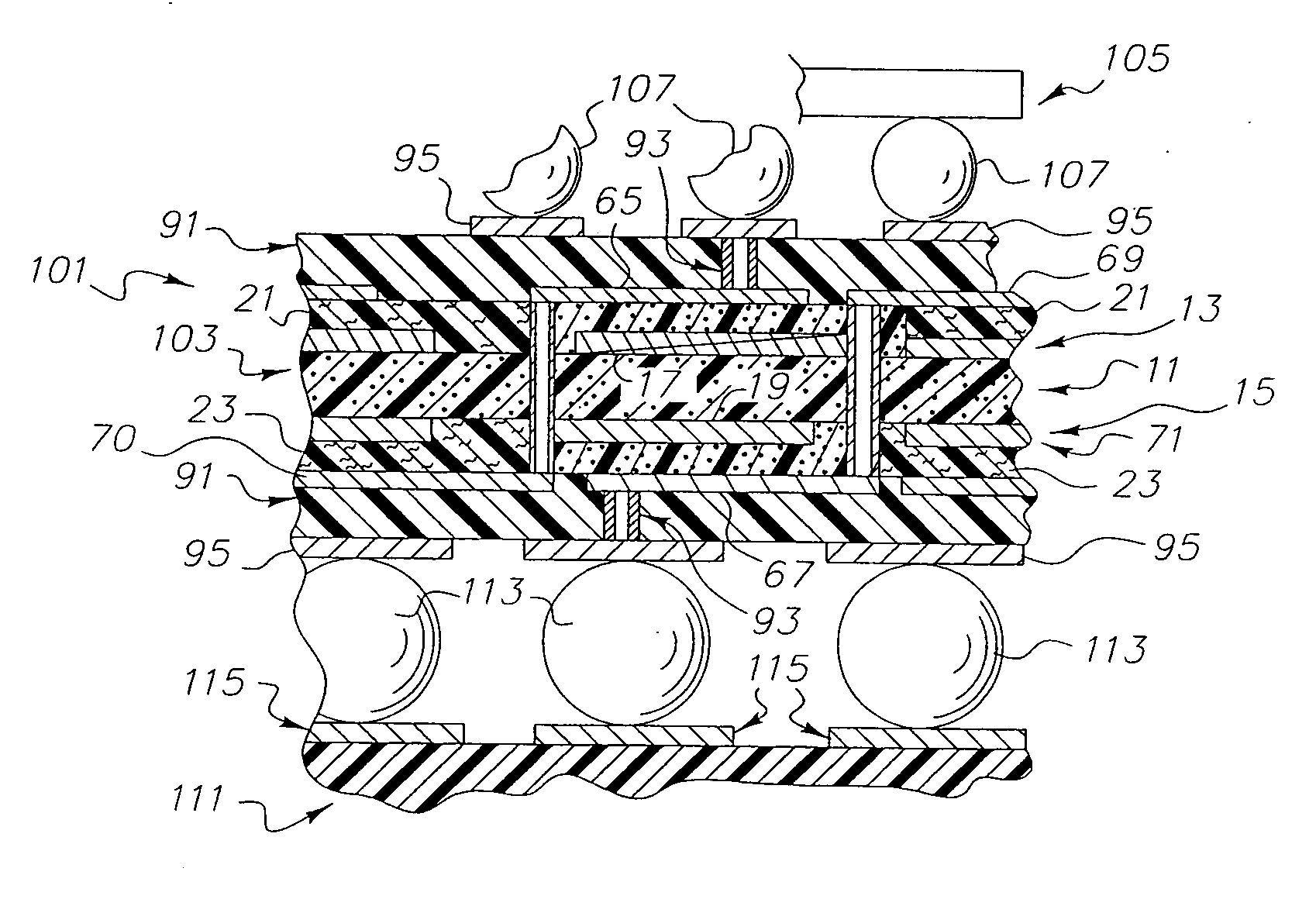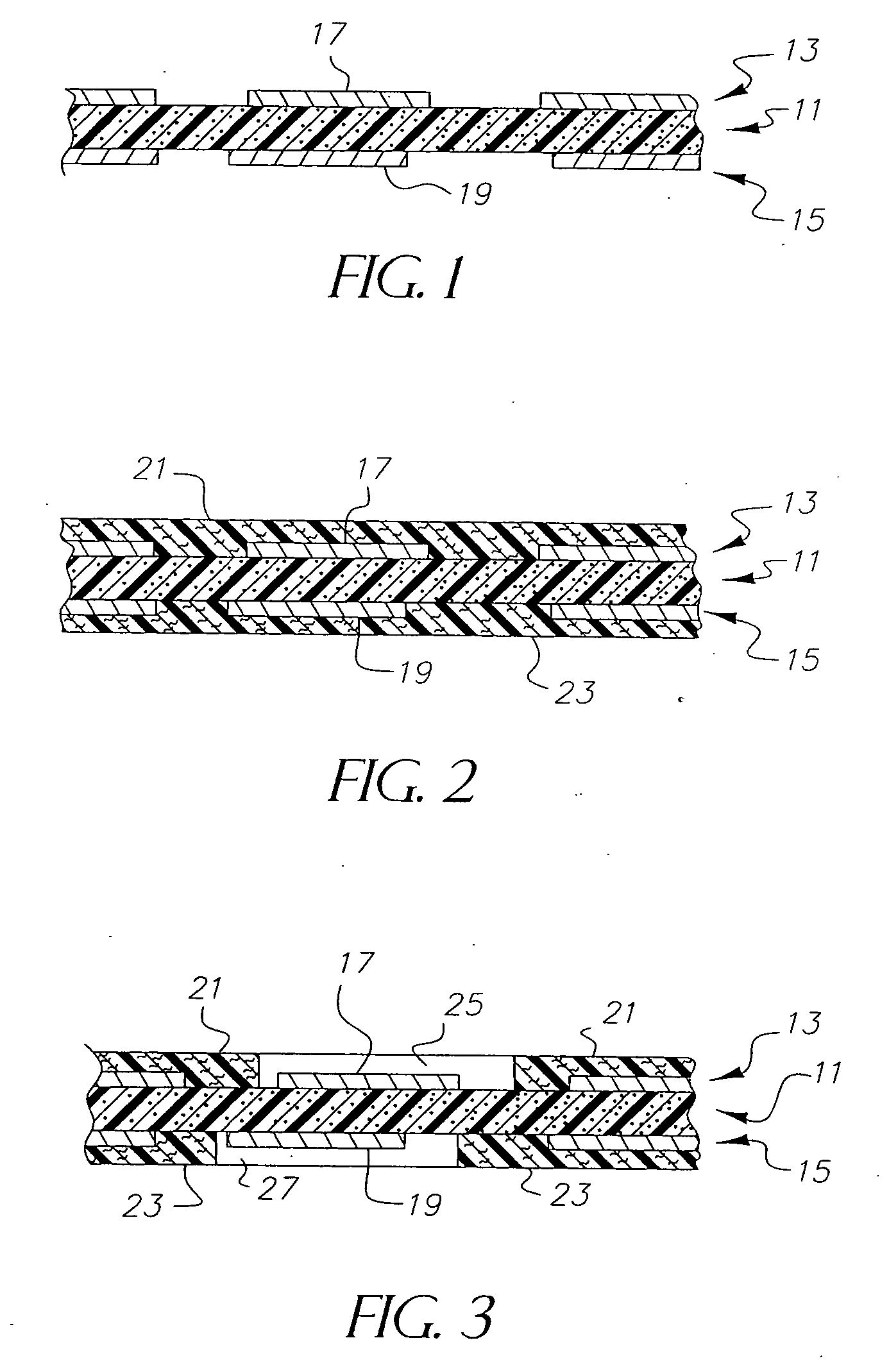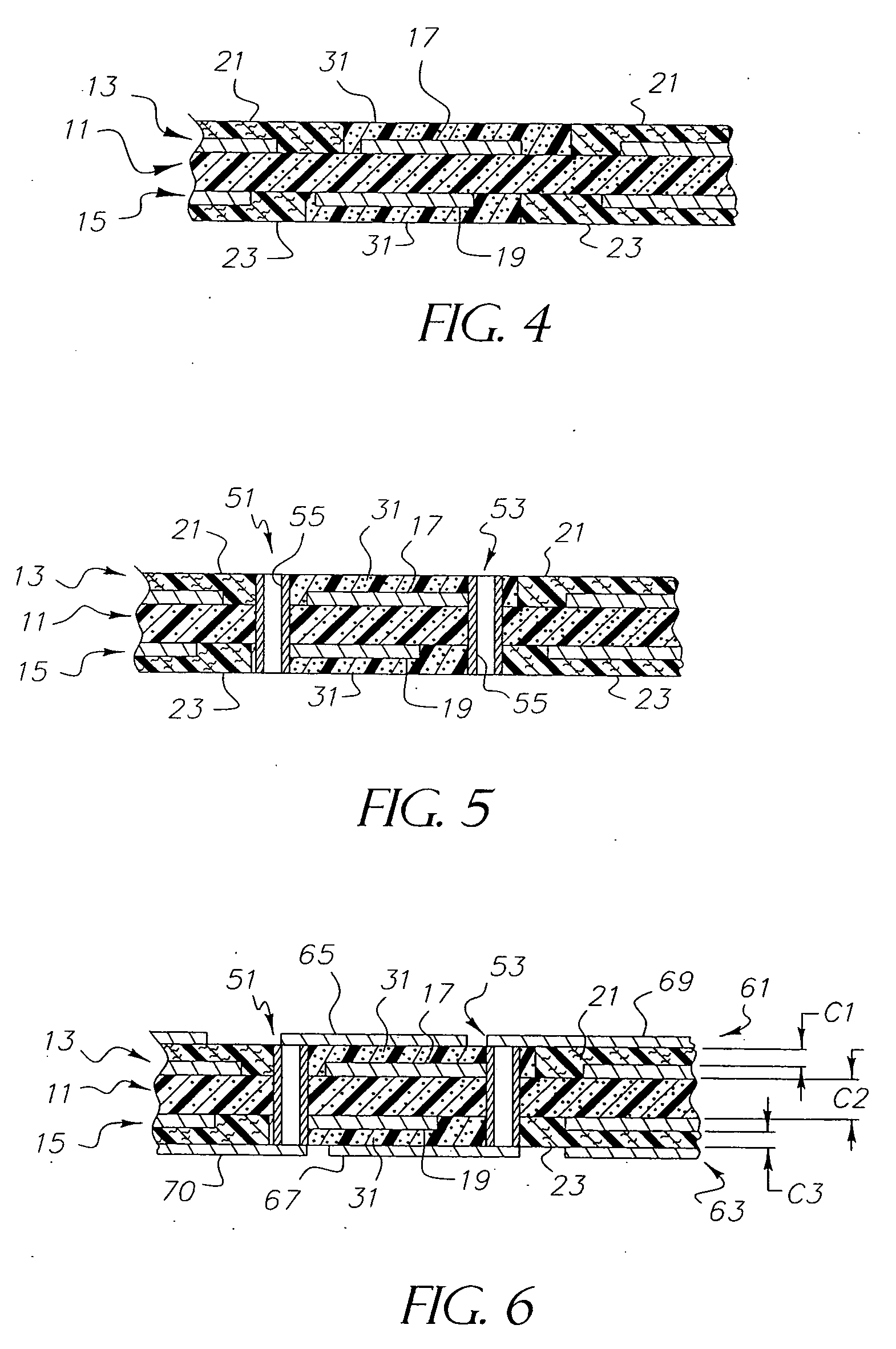Method of making a capacitive substrate using photoimageable dielectric for use as part of a larger circuitized substrate, method of making said circuitized substrate and method of making an information handling system including said circuitized substrate
- Summary
- Abstract
- Description
- Claims
- Application Information
AI Technical Summary
Benefits of technology
Problems solved by technology
Method used
Image
Examples
example one
[0076] Fifty grams (gm) of cycloaliphatic epoxy resin (e.g., one sold under product designation “ERL-4211” by the Union Carbide Corporation, Danbury, Conn.) was mixed with about fifty grams (gm) of hexahydro-4-methylphthalic anhydride and 0.4 gm N,N dimethyl benzylamine. The mixed solution was stirred for ten minutes to assure uniform mixing. Sixty gm of barium titanate (BaTiO3) powder available from the Nippon Chemical Industrial Co., Ltd., of Tokyo, Japan was added to 17.5 gm of the mixed solution and formed into a screen printable paste. A layer of this material was screened through a 145 mesh screen onto the top surface of a copper conductor. This layer was then cured at approximately 150° C. for about two hours. The second electrical conductor was then formed using a sputtering operation atop the cured screen printed material using a mask normally used for such sputtering operations. The resulting capacitance density of the formed capacitor measured about 5.5 nano-Farads(nF) / sq...
example two
[0077] As in Example One, fifty gm of “ERL-4211” cycloaliphatic epoxy resin was mixed with about fifty gm of hexahydro-4-methylphthalic anhydride and 0.4 gm N,N dimethyl benzylamine. The mixed solution was stirred for ten minutes to assure uniform mixing. 100 gm of barium titanate (BaTiO3) powder available from the Nippon Chemical Industrial Co. was added to twenty-one gm of the mixed solution and formed into a screen printable paste. A layer of this material was screened through a 200 mesh screen onto the top surface of a copper conductor. This layer was then cured at approximately 190° C. for about two hours. The second electrical conductor was then formed using a sputtering operation atop the cured screen printed material using a mask normally used for such sputtering operations. The resulting capacitance density of the formed capacitor measured about 16 nano-Farads(nF) / square inch, with a dielectric loss of only about 0.02 at one Mega-Hertz (MHz). The average (mean) particle siz...
example three
[0078] Fifty gm of an epoxy resin sold under the product name “LMB7259” from Huntsman, Salt Lake City, Utah was mixed together with 175 gm of barium titanate (BaTiO3) powder available from Nippon Chemical Industrial Co. and twenty-eight gm of propylene glycol methyl ether acetate. The mixed solution was stirred for ten minutes to assure uniform mixing and made into a screen printable paste. A layer of this paste material was screened through a 200 mesh screen onto the top surface of a copper first electrical conductor. This layer was then cured at approximately 190° C. for about two hours, as in Example Two. The second electrical conductor was then formed using a sputtering operation atop the cured screen printed material using a mask normally used for such sputtering operations. The average (mean) particle size for the added powder was about 0.5 micron, the surface area about 2.65 square meters / gm, and the specific gravity about 5.30.
PUM
 Login to View More
Login to View More Abstract
Description
Claims
Application Information
 Login to View More
Login to View More - R&D
- Intellectual Property
- Life Sciences
- Materials
- Tech Scout
- Unparalleled Data Quality
- Higher Quality Content
- 60% Fewer Hallucinations
Browse by: Latest US Patents, China's latest patents, Technical Efficacy Thesaurus, Application Domain, Technology Topic, Popular Technical Reports.
© 2025 PatSnap. All rights reserved.Legal|Privacy policy|Modern Slavery Act Transparency Statement|Sitemap|About US| Contact US: help@patsnap.com



